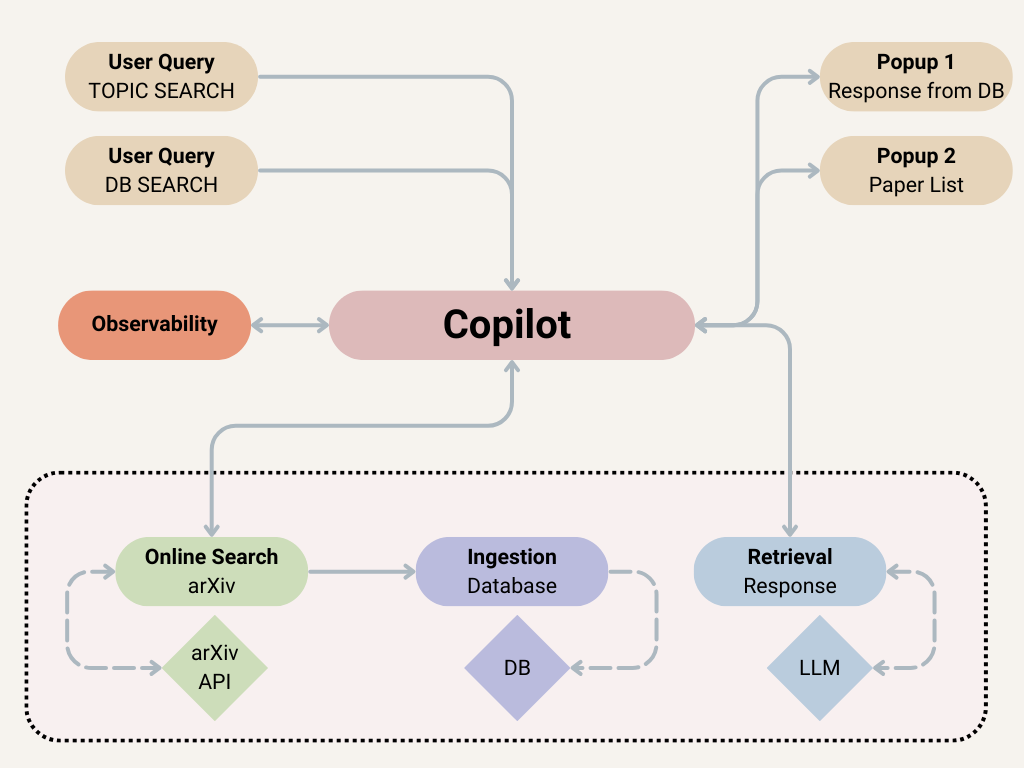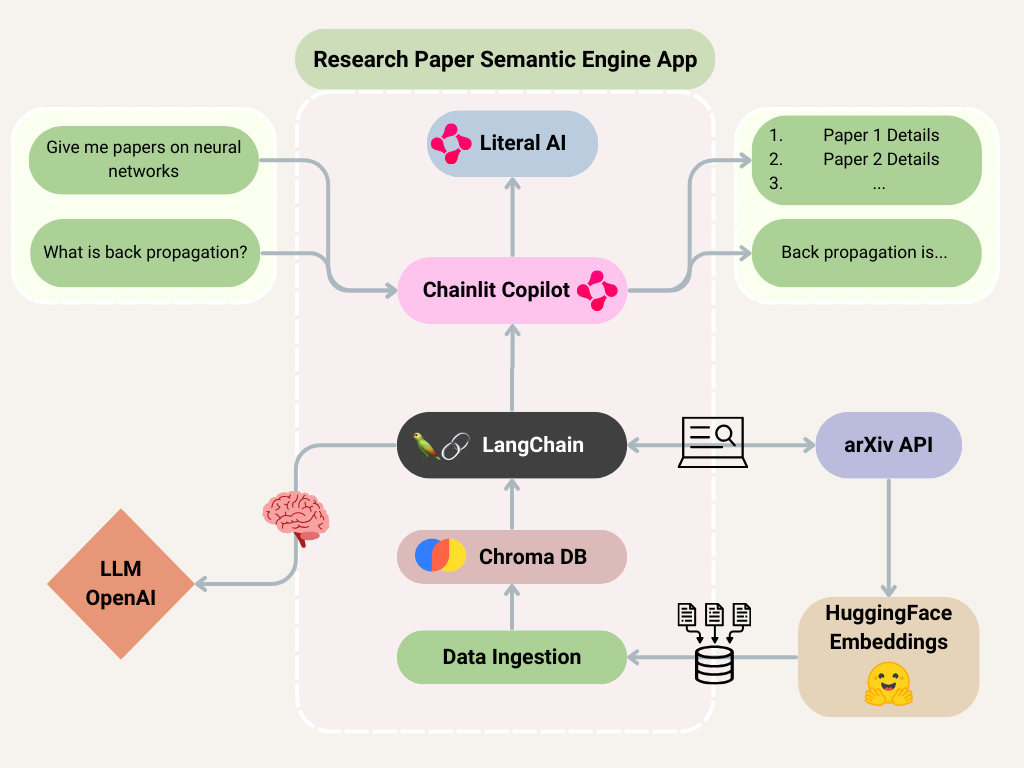This project demonstrates how to create an observable research paper engine using the arXiv API to retrieve the most similar papers to a user query. The retrieved papers are embedded into a Chroma vector database, based on Retrieval Augmented Generation (RAG). The user can then ask questions from the retrieved papers. The application embeds a Chainlit based Copilot inside the webpage, allowing for a more interactive and friendly user experience. To track performance and observe the application's behavior, the application is integrated with Literal AI, an observability framework.
Software Copilot are a new kind of assistant embedded in your app/product. They are designed to help users get the most out of your app by providing contextual guidance and take actions on their behalf. Here is an overview of the application architecture:

- Retrieve relevant papers based on user query using the LangChain wrapper for
arXivAPI - Embed retrieved papers in a Chroma database to initiate a RAG pipeline
- Create optimized prompts for the RAG pipeline using Literal
- Develop a Chainlit application for the above
- Create a simple web for the application
- Embed the Chainlit Copilot inside the web app for a more interactive experience
- Integrate observability features to track app performance and generations using Literal
This project leverages the following technologies:
- Chainlit: Used for deploying a frontend application for the chatbot, and embedding the copilot.
- Literal AI: For creating, optimizing and testing prompts for the RAG pipeline, and for integrating observability features in the app.
- LangChain: For retrieving arXiv queries, and managing the app's language understanding and generation.
- OpenAI: Ensures high-speed computations utilizing the GPT-3.5 models.
- Chroma: For creating the vector store to be used in retrieval.
- Python 3.8 or later
- An OpenAI API key
- A Literal AI API Key
Clone this repo using the following commands:
git clone git@github.com:tahreemrasul/semantic_research_engine.git
cd ./semantic_research_engineTo set up your development environment, you'll need to install Conda. Once Conda is installed, you can create and activate a new environment with the following commands:
conda create --name semantic_research_engine python=3.10
conda activate semantic_research_engineAfter activating the Conda environment, install the project dependencies by running:
pip install -r requirements.txtrag_test.py: Test script to demonstrate building blocks of the pipeline used in the RAG portion of the application.search_engine.py: Main script to run the semantic research paper engine with a Chainlit frontend application.index.html: The primary HTML file serving as the user interface for the semantic research paper search engine, embedding the Copilot for an interactive experience.
- Create a
.envfile in the root directory of the project. - Add your OpenAI & Literal AI API keys to the .env file:
OPENAI_API_KEY='Your-OpenAI-API-Key-Here'
LITERAL_API_KEY='Your-LiteralAI-API-Key-Here'The application can be run by first deploying the Chainlit web app. To do this, run:
chainlit run search_engine.py -wThis command will start a local web server at https:/localhost:8000. It is important to do this first before hosting the web application.
Once your Chainlit server is up and running, you can deploy the web app by in a separate terminal using:
npx http-serverRemember the HTML file has to be served by a server, opening it directly in your browser won’t work. The above command ensures this is done correctly using npm from Node.js. The web application should be live at https:/localhost:8080.
Contributions to the Semantic Research Engine App are welcome! Please feel free to submit pull requests or open issues to suggest improvements or add new features.
